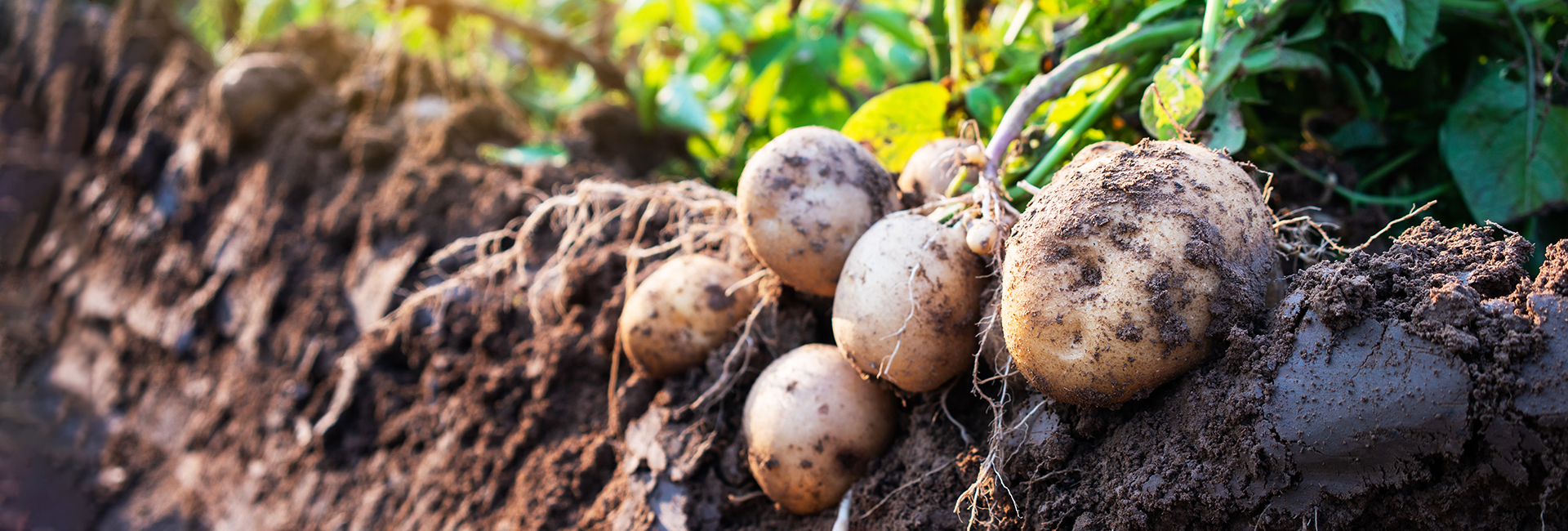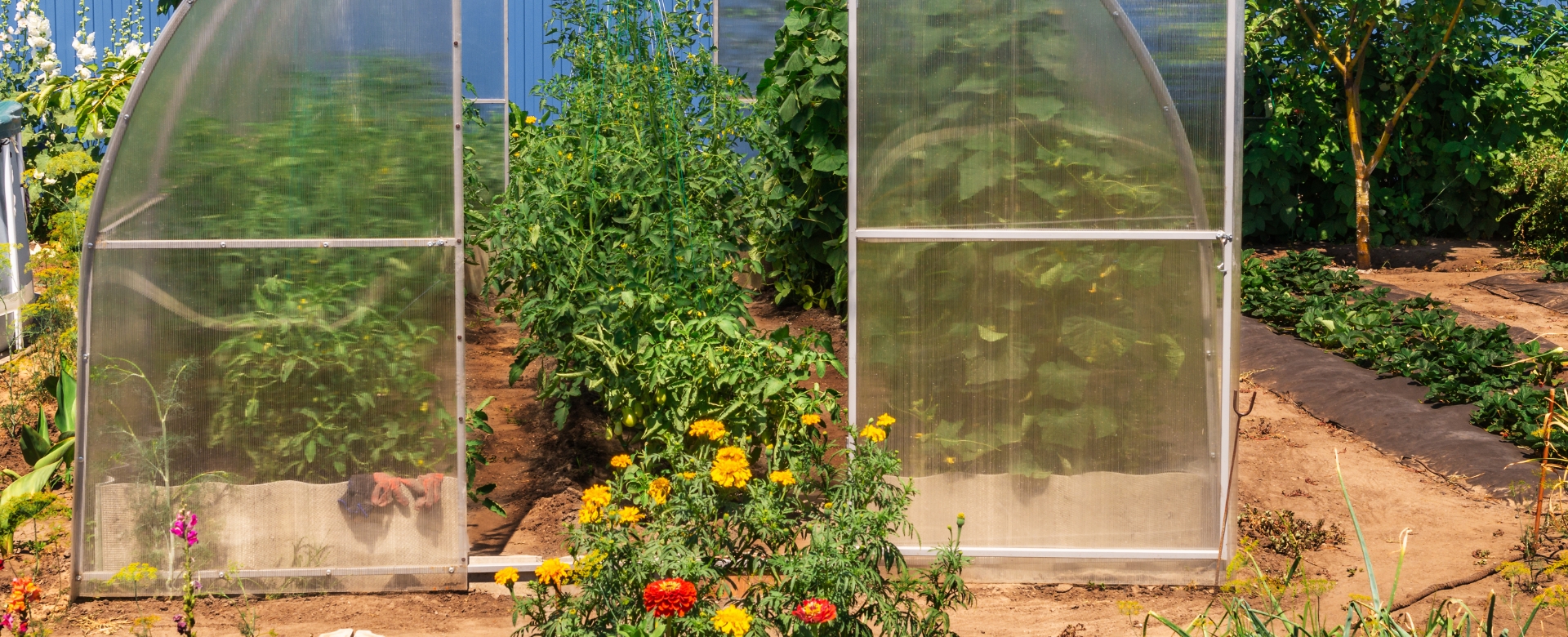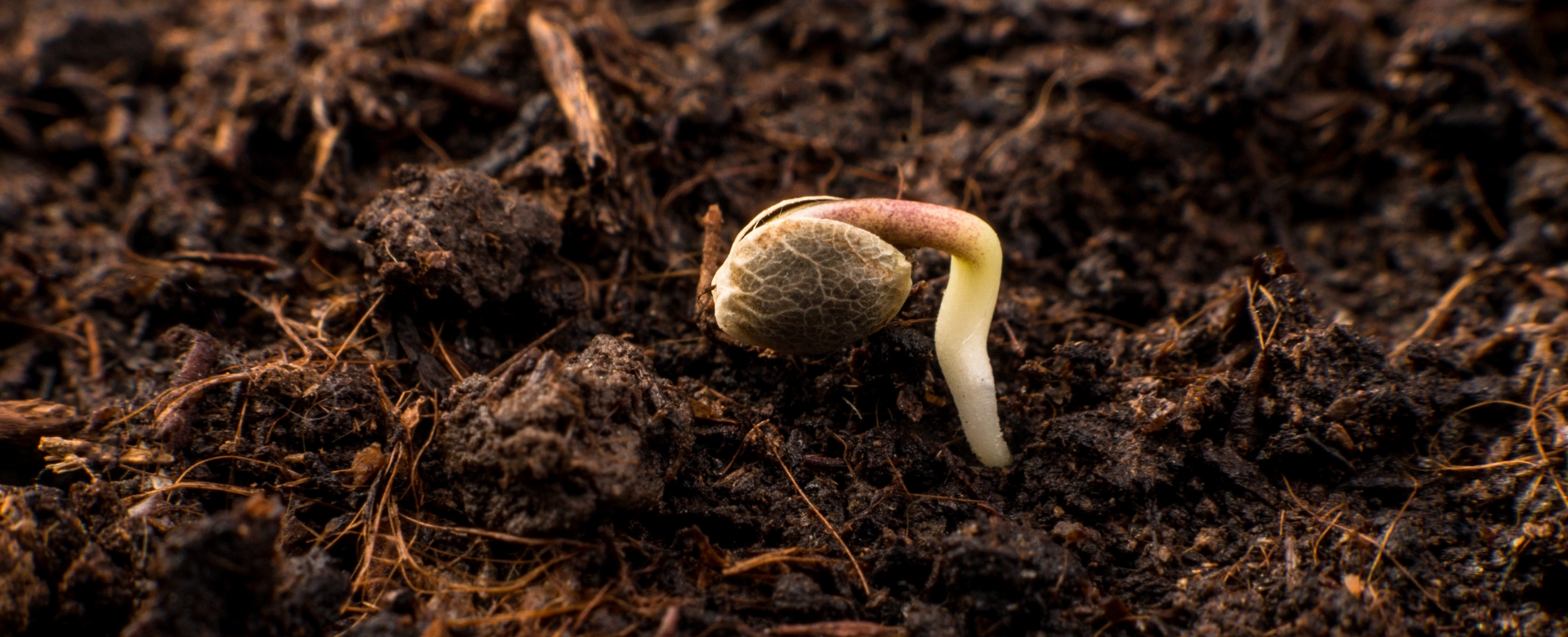Advanced hydroponic technology in farming helps grow and harvest different plant varieties. It works on a concept related to the agricultural sector, which faces problems finding new fertile land for crop production. The hydroponic gardening technique enables crops to be grown in greenhouses or multi-level buildings.
The best thing about hydroponic gardens is that they require few resources. Hydroponics is estimated to use about 95% less water than traditional forms of open-field farming. With hydroponic gardening.
Growing plants in a hydroponic system requires regular care and monitoring to ensure the system functions properly and doesn’t get affected by waterborne diseases. Plants need the proper amount of light, water, and nutrients to grow and flourish.
Plants get all the required nutrients from the soil, but hydroponic technology is about growing food with nutrient-enriched water. Plant’s roots are placed directly in the dissolved nutrients or a suitable growing medium like coconut fiber, perlite, peat moss, and clay pebbles.
Crops grown via hydroponic gardening are productive and environment-friendly, which is why they are considered as the future of modern agriculture. Hydroponics in agriculture isn’t new, but recent developments have made this industrial practice accessible to anyone. If you are building your own hydroponic system, make sure you include strong lights to promote plant growth.
What is Hydroponic Gardening?
Hydroponic gardening is a method of growing different crops without soil. Hydroponic plants get their essential nutrients for growth from water as a medium. It is an effective system for growing plants, and soon, it will be one of the sustainable ways of food production.
Plants grown using hydroponic gardening methods require water, light, carbon dioxide (from air circulation), and essential nutrients. This gardening method offers a great way to nurture a vast variety of edible plants indoors all year round.
Significant Ways for Successful Hydroponics Gardening
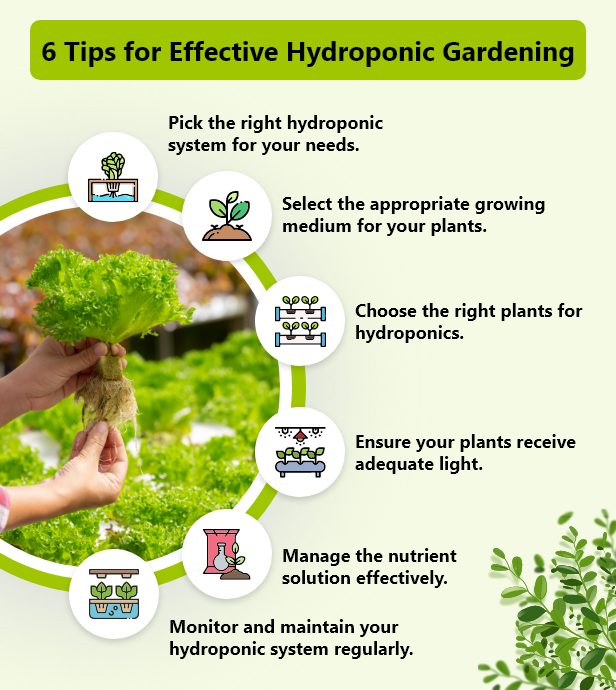
1. Choose the Right Type of Hydroponics Growing System
There are different types of hydroponic systems, each with their own pros and cons. When selecting a hydroponic system for gardening, it is essential to consider cost, plant type, available space, and waste.
Setting up a hydroponic system requires essential components like water, tubes, a growing tray, a growing medium, a reservoir, an air pump and air stone, a pH meter or soil test kit, and net pots/containers for plants.
2. Select The Right Growing Medium
A good growing medium has the right combination of moisture and oxygen. It allows nutrients to be properly absorbed by the roots of the plants. Some growing mediums might have a varied pH balance, better water retention, or easy setup.
3. Select The Right Plants
Selecting the right plants is important for successful hydroponic gardening. You should consider how much light and heat you have access to when selecting a plant. Also, consider factors like water and nutrient requirements, root structure, growth rate, and climate adaptability.
4. Give Proper Light to Plants
Proper light plays an essential role in successful hydroponic gardening. Plants grown through indoor hydroponic gardening method depend on artificial lighting to thrive. You should provide the right light and give the plants the correct amount of light.
LED grow lights are the best for hydroponic growers as they are energy-efficient and emit the full spectrum of lights required by plants. You should adjust the height of the grow lights to ensure that they are at optimal distance from your plants.
5. Nutrient Solution Management
Organic hydroponic gardening requires careful maintenance of a well-balanced nutrient solution for the best plant growth. Monitor crops’ nutrient levels and make necessary adjustments based on their growth stage. Adopt a chemical-free approach to plants by feeding them organic nutrient solutions from natural sources like seaweed extracts, compost teas, and fish emulsions.
6. Monitoring and Maintenance
It is one of the most important ways to succeed in hydroponic gardening. Regular monitoring and maintenance of your system are essential. This involves consistently checking and adjusting pH levels, nutrient levels, water temperature, and water flow.
This ensures that your plants are getting the optimal growing conditions they require. It is also essential to regularly clean your system to prevent algae buildup or other harmful bacteria.
What Can You Grow with Hydroponics?
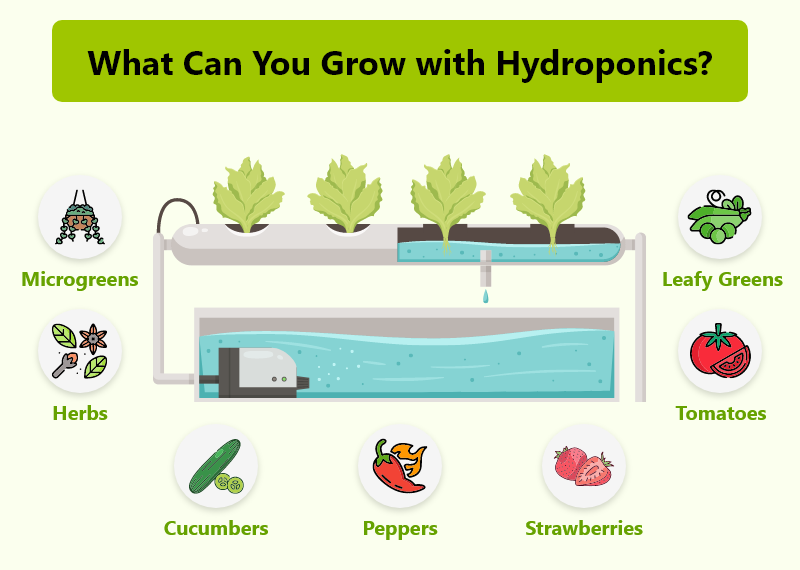
The following are the best plants to grow hydroponically:
1. Microgreens – These small plants are high in nutritional value and carry an intense punch of flavor. You can harvest microgreens in about 6-14 days. You can grow microgreens repeatedly.
If grown hydroponically, microgreens don’t require much light. This makes them one of the most favorable hydroponic plants.
2. Leafy Greens – You can consider growing leafy greens like lettuce, spinach, kale, and Swiss chard using hydroponic methods. These plants grow well in hydroponic systems owing to their shallow root systems and rapid growth.
3. Herbs – Through hydroponic gardening, you can grow different herbs like basil, sage, thyme, mint, rosemary, lemon balm, parsley, cilantro, and baby dill. Herbs grown using the hydroponic method exhibit more vigorous growth and yield than their soil-grown counterparts.
4. Tomatoes – You can consider growing tomatoes using hydroponic method. The main reason is that tomatoes require a specific set of nutrients, which can be controlled through hydroponic gardening. The hydroponic garden method tends to produce high yields of tomatoes.
5. Cucumbers – They are best for hydroponic farming. They use available space in the best way and respond well to nutrient management. They are likely to have controlled flowering conditions.
6. Peppers – Peppers really work well in hydroponic systems, as they benefit from precise nutrient control. The hydroponic method allows you to grow peppers vertically, thus making everything space efficient.
7. Strawberries – Strawberries are ideal for hydroponic farming because they have a small root system that works well in small spaces. They are also ideal for vertical farming.
Types of Hydroponic Gardening Systems
1. The Wick System
This hydroponic gardening system is more common in home and indoor gardens. It involves feeding essential nutrients to plants with a wick or string running from the roots to a nutrient-rich water reservoir.
Plants grown through the hydroponic system are placed in rock, clay, or sand to help anchor their roots. As the soil or the growing media around the plant dries out, the wick absorbs water and essential nutrients from the reservoir and transports them to the plants’ roots.
2. The Nutrient Film Technique (NFT)
This gardening system includes plants angled in a tray above a reservoir of aerated nutrient-filled water. A water pump continually runs a steady stream of water over the plants, providing water, air, and nutrients as it cycles through the tray and reservoir. It is one of the most common hydroponic systems used on an industrial scale.
3. Ebb And Flow System
This hydroponic gardening system involves plants partially flooded or submerged in a tank of nutrient-rich water. Once the plants have taken up the required nutrients, the water is replaced and reused. It is one of the simplest and most common hydroponic systems used in small-scale operations and home gardens.
4. Aeroponics
The aeroponic system is easy to understand but somewhat challenging to build. This hydroponic garden is beneficial in a large commercial setting. It doesn’t require a medium.
Plants you wish to grow will be suspended in the air, and the naked roots will be exposed to a nutrient-filled mist. Water and nutrients are stored in a reservoir and pumped into a nozzle.
5. Deep Water Culture (DWC)
With deep water culture hydroponics grow system, the plant’s roots are suspended in the nutrient solution, and the air is directly provided to the roots with a diffuser or an air stone. Plants are placed in net pots with a growing medium to help secure them. This method works great for almost all plants but exceptionally well for large plants with big root systems or one that grows abundant fruit. It is an easy method and requires less maintenance.
What are the Benefits of Hydroponics Gardening System?

1. Water Conservation
Hydroponic gardens reduce water usage by up to 90% compared to traditional soil-based farming. In hydroponic systems, water is recirculated, thereby lowering water consumption and minimizing wastage. Additionally, technologies like drip irrigation and fogging systems help make hydroponic farming a sustainable choice.
2. Nutrient Control
In a hydroponic gardening system, plants are fed with a nutrient solution mixed with water. It gives the farmer better control over what nutrients are absorbed by the plants. In hydroponic gardening system, plants receive the right amount of support they require. With research and accurate measurements, your nutrient solution provides everything your plants need to flourish.
3. Space Efficiency
With hydroponics, you can grow crops vertically and maximize space and efficiency. Hydroponic systems require less space than water since the water in which plants are situated is already filled with nutrients.
Plants can be grown closer together and even more with a vertical system that stacks plants on top of each other. The plants don’t spread out to obtain essential nutrients. It enables people with limited land access to cultivate crops in areas where traditional agriculture is impossible.
4. Higher Crop Yields
A hydroponic system has a controlled environment combined with optimized nutrient delivery. It results in higher crop yields compared to traditional farming methods. This high crop yield helps meet the growing demand for fresh produce worldwide. Plants grown through the hydroponic medium are healthy and grow faster, generating more produce.
5. Faster Growth Rates
Plants grown through hydroponic gardening exhibit faster growth rates due to direct access to vital nutrients and optimized growing conditions. This speedy growth allows quick crop turnover, thereby increasing overall productivity. If grown indoors, they will have less environmentally induced stress from pests, weather, and other harmful elements.
Some plant species grow faster than others. For instance, leafy greens like lettuce and fruits like tomatoes grow faster in hydroponics. Pairing hydroponic systems with the right plants can produce high yields.
Disadvantages Of Hydroponic Gardening System
1. Initial Cost
Setting up a hydroponic farm requires significant upfront investment in hydroponics equipment, technology, and infrastructure. While long-term operational savings can be achieved, the initial capital outlay may prove expensive for some farmers.
2. Technical Expertise
Hydroponic home gardening requires technical knowledge and expertise in pH balancing, nutrient management, and system maintenance. Farmers should be proficient in operating and troubleshooting hydroponic systems for optimal performance.
3. Maintenance Requirements
You should regularly monitor nutrient solutions and ensure the right pH and nutrient levels for optimal plant growth. Water quality and temperature require constant attention, and the reservoir and system components must be frequently cleaned to prevent contamination and blockages. Regularly check for signs of stress, pest infestation, and environmental conditions to ensure the plant’s growing requirements are met.
4. Susceptibility to Waterborne Diseases
While growing plants in a hydroponic system, plants might develop the risk of waterborne diseases. The constant water circulation through the system makes the plants susceptible to waterborne diseases.
5. Limited Crop Selection
However, hydroponic gardening supports different types of crops. Certain plants might grow poorly in hydroponic systems compared to traditional soil-based cultivation. Certain root crops require specialized hydroponic techniques for hydroponic farming.
Conclusion
Adapting to hydroponic gardening offers efficient, sustainable, and rewarding results. By selecting the right hydroponic system, optimizing water usage, balancing nutrients, ensuring proper lighting, maintaining pH levels, and regular monitoring, you can enjoy a thriving hydroponic garden, regardless of space limitations. Dive into the hydroponics world and cultivate your plants in a modern and innovative way.
FAQs
Hydroponic gardening is healthy as it produces nutritious and pesticide-free vegetables while efficiently using resources. It requires careful management of nutrients and water to maintain plant health and ensure environmental sustainability.
Deep Water Culture (DWC) is the best hydroponic system for beginners as it is easy to build and maintain at home. In this hydroponic system, plants grow with their roots submerged directly in nutrient-rich water.
Yes, hydroponic gardens are worth growing as they are environment-friendly and offer a good solution for water shortage.
Different factors affect the frequency of water changes in hydroponic gardening. Hydroponic water should be changed every two to three weeks, and hydroponic systems typically need water added every day.
Pumice stone, rockwool, perlite, vermiculite, coconut coir, and clay pellets are the best rocks for hydroponics.


